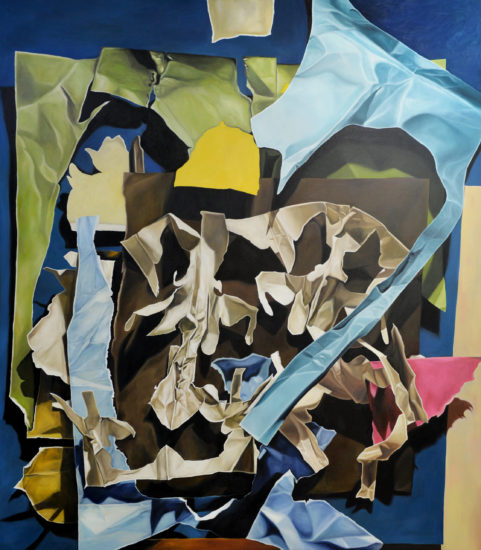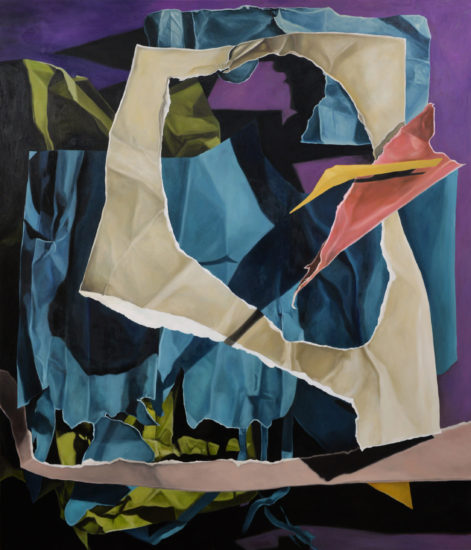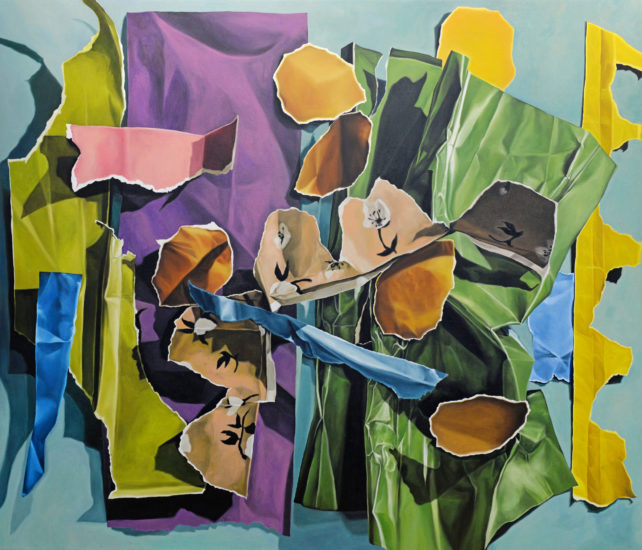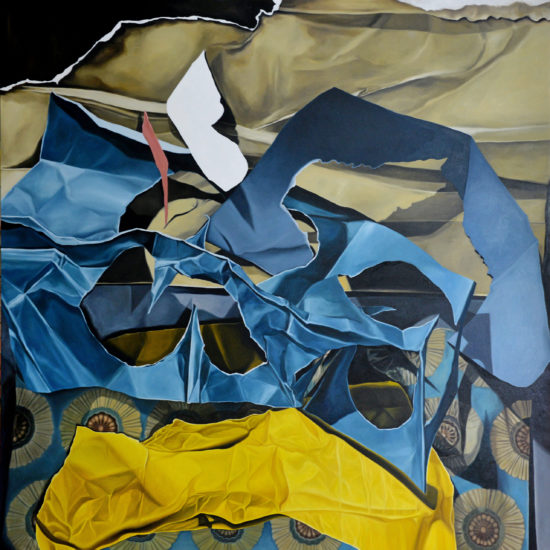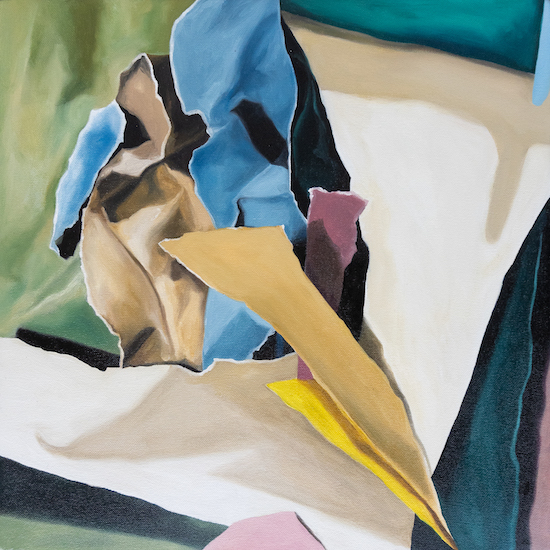It is the reality of everyday life that we are torn and we are gathered – defamiliarised and refamiliarised. Ayka Go ponders this cycle using small gestures of impermanent paper collages captured and frozen in a moment through large-scale oil paintings.
Through his seminal 1933 essay “In Praise of Shadows,” eminent Japanese novelist Tanizaki Junichiro mulls over a discourse in aesthetics, primarily one that had been inherent in Japan and how it has been subsumed by styles coming in from the West. As the title suggests, shadows play a central role, particularly in interiors. More than from a bright light source, it is through shadows and its ever so slight gradients — barely discernible at times — that a vast spectrum of nuances that greatly change appeal and meaning are able to manifest themselves. It is in clear opposition to the Western practice of illuminating every nook and corner, putting everything out of its mystery.
Currently, the artist’s oeuvre includes an array of trompe l’oeil compositions largely inspired by childhood paper-folding activities with her father, including origami, collages, and just about anything possible for playtime. While they bring to mind the hyperrealist paper renderings of Claudio Bravo, they transcend the realism through an almost Magrittean play on imagery and meaning. On the surface it feels something as simple as nostalgia for children’s playthings, but there is always a flipside to every story.
Exploring this upside down, the artist turns to a stash of torn and crumpled paper scraps that she has been keeping in her studio. Offcuts from other activities, she takes them out to make compositions, none of which are permanent. Changing them up almost every day until there is one that resonates with the moment, it is almost like awaiting Cherry Blossoms — more than the beauty of the scenery, it is the way that it evokes the passing of time that gives it value. The Japanese refer to this as “mono no aware,” an appreciation for the passing of time through the life of objects, and it figures importantly into the Zen concept of Wabi-Sabi, and the core beauty of life, which lies in impermanence.
As mundane as the subject matter seems, one cannot help but be swayed by how tactile they appear. They are meant to be static frames – a still – but looking at the images, it would feel that some scrap in a corner momentarily fluttered from a tiny breeze. Solid blocks of colour, punctuated with an occasional printed flower or some pattern, with figures prancing around within the compositions, some as if ready to fly out of the canvas and be spirited away. The effectivity of the illusion lies in the masterful depiction of shadows — from faintly present to enough darkness negating the subject’s original hues — pushing out flat sheets into the realm of multiple dimensions through the mind’s eye. The magnified images lend an abstraction to what are materially remnants of the uncertainty of pandemic days. While they don’t portray people or events, they illustrate a sentiment that the entire world continues to grapple with.
If there is anything imparted by these oil paintings, executed in such large scale, it is a moment in time that was so important that it is not enough to memorialised as a photograph — but through time, skill, and devotion, though uncertainty, hard work, and an acceptance that the world has always been, and will still be, changing. Our lives are but mere points on the vast fabric of crumpled time and torn space; but as obscure and insignificant as it presents, it allows the uniquely human capacity to make each moment, and to make them count.
– Koki Lxx
